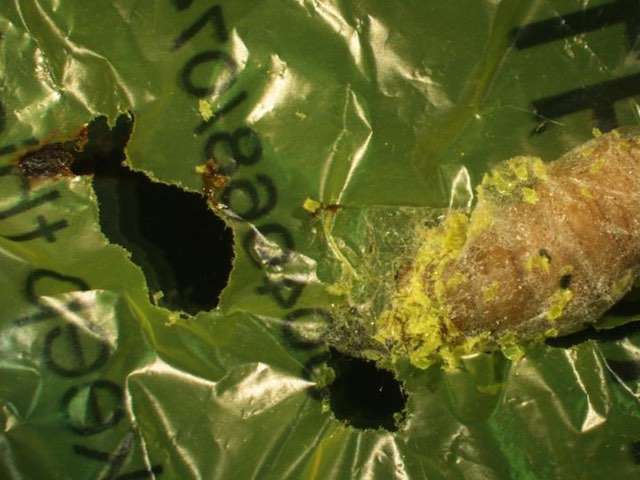UK to Hold First Ever Nationwide Quiet Hour for Autistic Shoppers
In October, autistic shoppers will be given sixty minutes to browse participating stores at their leisure – but without the stress of information overload.

Generally speaking, plastic is incredibly resistant to decay, and that's certainly true of the one trillion polyethylene plastic bags that people use and discard each year.
But researchers may now be inching toward a solution for plastic waste; and the key is a caterpillar commonly known as a wax worm.
After 12 hours, all that munching of plastic leads to an obvious reduction in plastic mass. The researchers showed that the wax worms were not only ingesting the plastic, they were also chemically transforming the polyethylene into ethylene glycol.
Although wax worms wouldn't normally eat plastic, the researchers suspect that their ability is a byproduct of their natural habits. Wax moths lay their eggs inside beehives. The worms hatch and grow on beeswax, which is composed of a highly diverse mixture of lipid compounds. The researchers say the molecular details of wax biodegradation require further investigation, but it's likely that digesting beeswax and polyethylene involves breaking down similar types of chemical bonds.
"Wax is a polymer, a sort of ‘natural plastic,' and has a chemical structure not dissimilar to polyethylene," Bertocchini says. "We are planning to implement this finding into a viable way to get rid of plastic waste, working towards a solution to save our oceans, rivers, and all the environment from the unavoidable consequences of plastic accumulation.
"However," she adds, "we should not feel justified to dump polyethylene deliberately in our environment just because we now know how to bio-degrade it."
(Source: CSIC)
Click To Share The News With Your Friends (Photo by Federica Bertocchini, Paolo Bombelli, and Chris Howe)
Be the first to comment